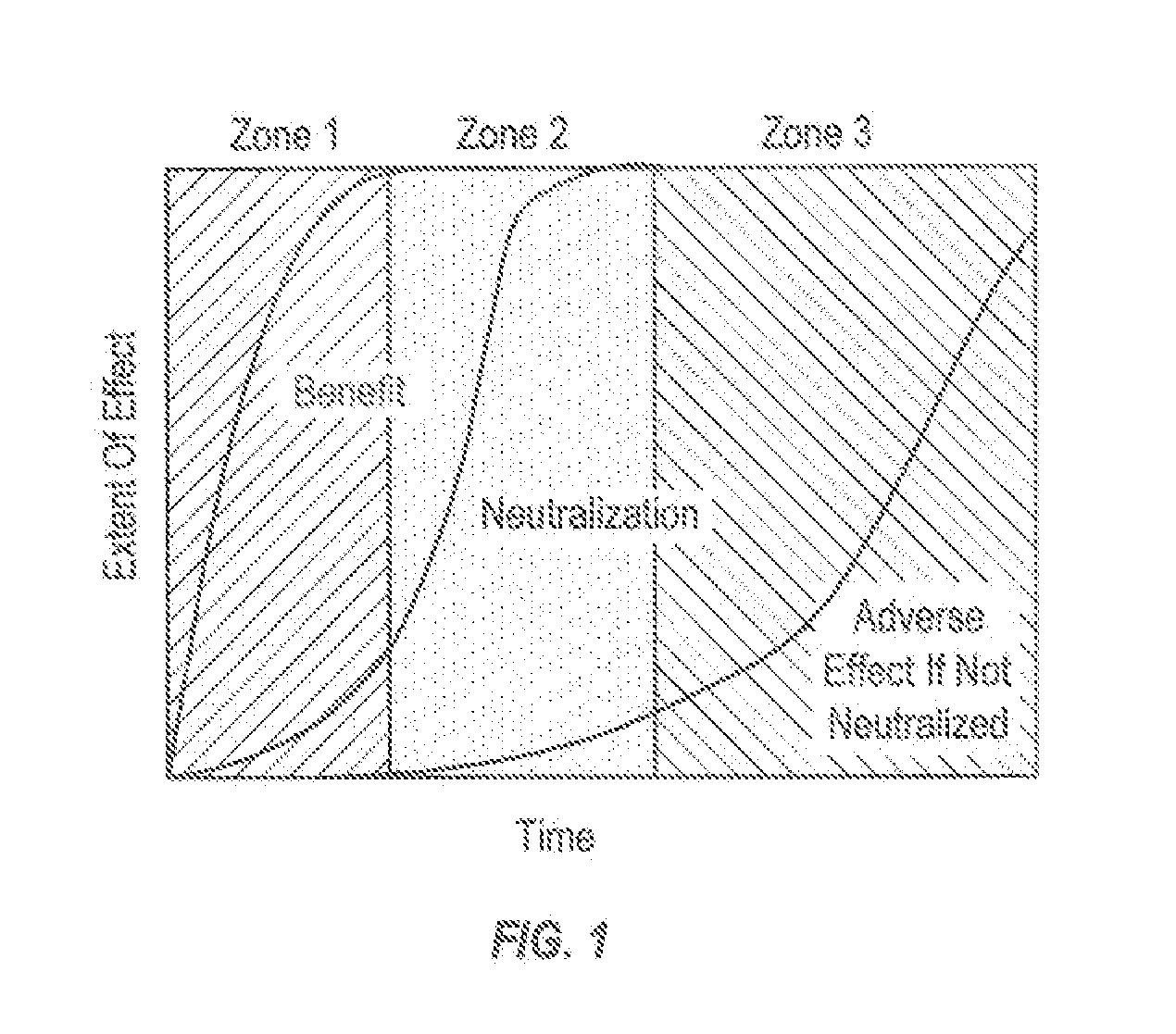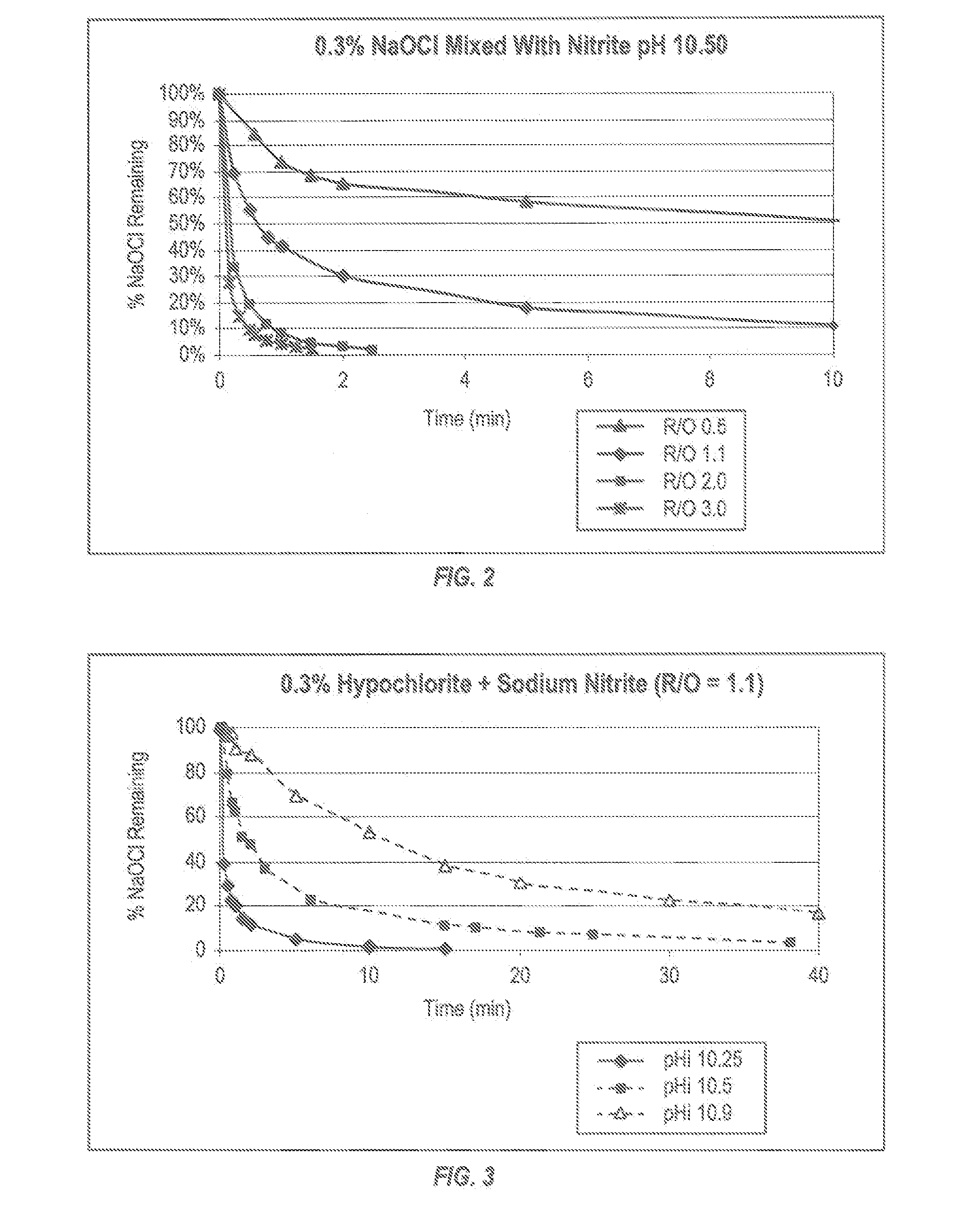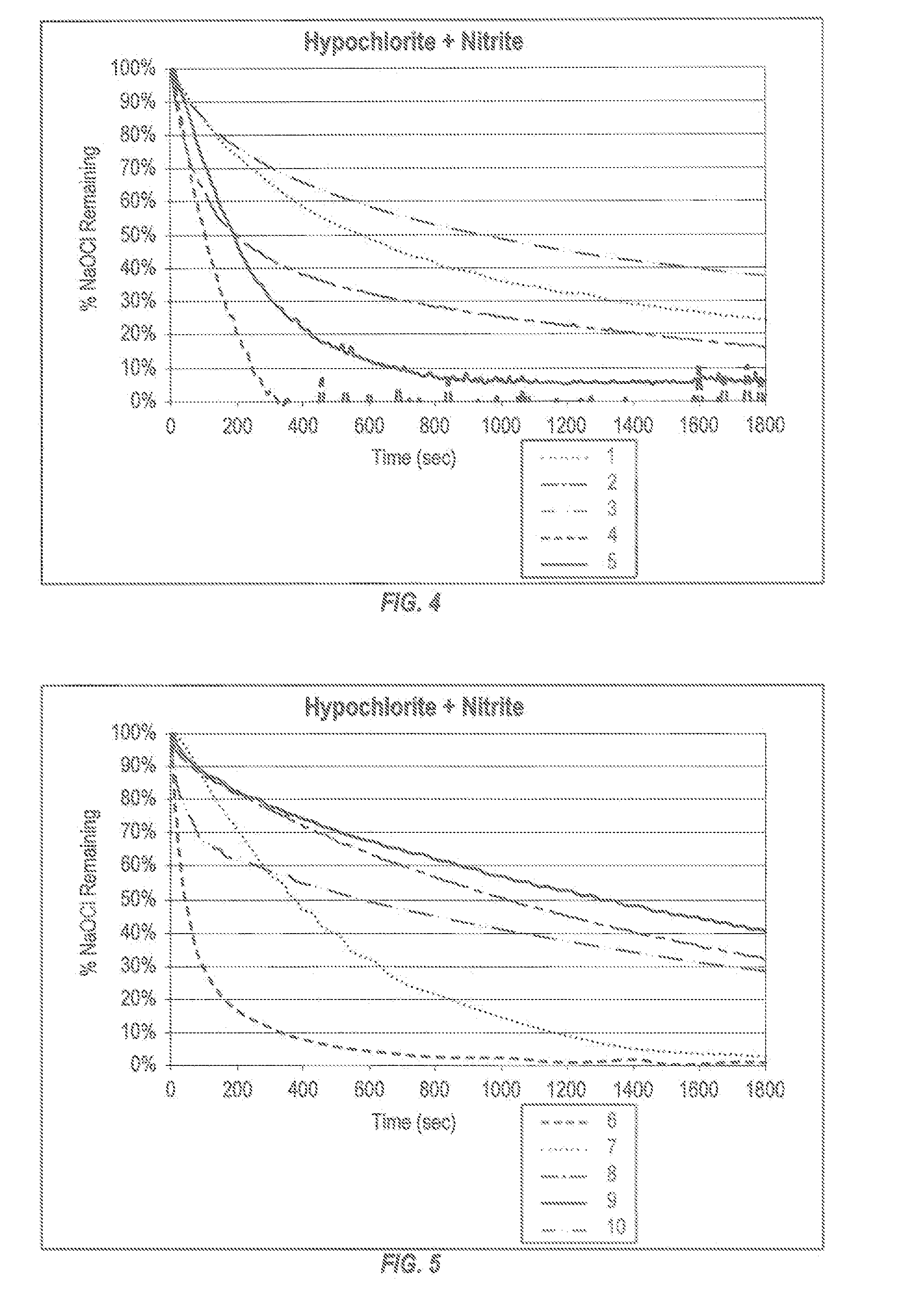Targeted performance of hypohalite methods thereof
a technology of hypohalite and cleaning agents, applied in the direction of biocide, detergent compounding agents, organic non-surface active detergent compositions, etc., can solve the problems of unpleasant odor and negative side effects of cleaning agents, and achieve the effects of reducing oxidant concentration, and preventing or minimizing negative side effects to the surfa
- Summary
- Abstract
- Description
- Claims
- Application Information
AI Technical Summary
Benefits of technology
Problems solved by technology
Method used
Image
Examples
example 1
[0124]In one embodiment of the invention, nitrite has been found to be a suitable reductant operational across the ranges of concentration illustrated below. Accordingly, in one embodiment of the invention, nitrite has been explored as a reductant as shown in FIG. 2, where the materials and composition parameter ranges explored are as follows: sodium hypochlorite (0.02 wt % to 0.3 wt %), sodium nitrite (0.03 wt % to 0.8 wt %) solution pHs from 6 to 11, wherein the molar ratio of reductant to oxidant (i.e., R / O) varied from 3:1 to 1:2.
[0125]In these embodiments, the effect of increasing R / O ratio is clearly evident with higher ratios eliminating hypochlorite more quickly FIG. 2. Further, the importance of controlling pH is evident in FIG. 3, where at higher pHs the reaction proceeds slower in embodiments of the invention where the initial pH is raised.
[0126]A broad range of conditions may be used to control the rate of hypochlorite consumption( this data may be plotted as hypo...
example 2
[0127]Fructose and other reducing sugars have been found to be suitable for use in the present invention as reductants. Results show an improved utility in higher pH solutions. Without being bound by theory this is believed to be due to reduced reactivity of the sugar toward hypochlorite when the sugar exists in its closed cyclic ester conformation. Elevated pH promotes hydrolysis of the sugar ring to the open configuration which is more reactive with hypochlorite.
[0128]Ranges of explored parameters and solution conditions tested were as follows: sodium hypochlorite from 0.02 wt % to 1.0 wt %; fructose from 0.05 wt % to 2.77 wt %, solution pHs from pH 7 to pH 1.4; covering a range of R / O ratios from about 0.7:1 to about 21.7:1.
[0129]In this series of embodiments, at elevated pH a broad range of conditions may be used to control the rate of hypochlorite consumption. A sub-sample of reaction conditions and results are found in Table 2 and FIGS. 6-7.
TABLE 2FormulaReductant(Trac...
example 3
Chelants
[0132]Other embodiments of the invention may employ selected chelants (sequestrants), such as disodium calcium EDTA (CaEDTA), which can be used to limit hypochlorite lifetime in a controlled fashion at lower pH where EDTA alone acts too rapidly in quench the initial hypochlorite concentration. EDTA reacts almost instantly at any pH below 12, but CaEDTA has utility in the near neutral region. Without being bound by theory, it is believed that the calcium salt likely works because the chelation of an aqueous calcium ion by EDTA makes the molecule much less reactive toward hypochlorite. The utility of using pH neutral compounds such as chelants as effective reductants or quenching agents enables ultimate solutions near neutral pH to be employed in the present invention. Again, without being bound by theory, it is believed that chelants act as does the class of other acidic reductants, because at lower pHs the mother ligand (here the partially chelated EDTA species) begins to re...
PUM
| Property | Measurement | Unit |
|---|---|---|
| time | aaaaa | aaaaa |
| length of time | aaaaa | aaaaa |
| pH | aaaaa | aaaaa |
Abstract
Description
Claims
Application Information
 Login to View More
Login to View More - R&D
- Intellectual Property
- Life Sciences
- Materials
- Tech Scout
- Unparalleled Data Quality
- Higher Quality Content
- 60% Fewer Hallucinations
Browse by: Latest US Patents, China's latest patents, Technical Efficacy Thesaurus, Application Domain, Technology Topic, Popular Technical Reports.
© 2025 PatSnap. All rights reserved.Legal|Privacy policy|Modern Slavery Act Transparency Statement|Sitemap|About US| Contact US: help@patsnap.com



